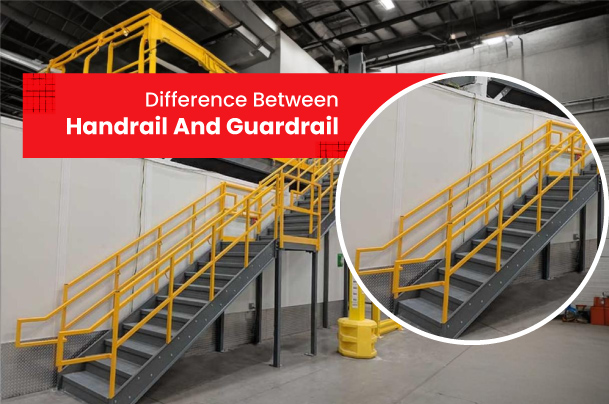
In the construction sector, many workers are likely to fall from heights or the rooftops. Such unexpected incidents not only cause suffering but also increase the burden for a medical procedure. However, handrails and guardrails can prevent accidents even when the workers are high above the ground. Even when handrails and guardrails appear similar, they serve the main purpose of protecting against falls. Moreover, the requirement for every barrier also varies to a certain extent. So in this article, we shall cover more about handrails and guardrails.
What Exactly Is A Guardrail?
When you observe guardrails, these are vertical barriers that prevent falls due to accidents. Such barriers also make the workers alert in case there is any hazard around the construction area. Besides, the guardrails also prevent certain individuals from entering a few areas. While guardrails are available in diverse styles, they include posts, intermediate rails and top rails. Compared to handrails, guardrails are designed to save lives around platforms, landings or in the presence of hazards.
Guardrail – OSHA Height Requirement
The OSHA standard states that the guardrails must approximately be 42 inches in height. Such type of guardrails should also have a midrail whenever it is needed. However, this standard does not speak about the tolerance for the top rail’s height. When workers have to install the top rail, a tolerance of 3 inches is permitted. Hence, the upper surface of the top rail must be located anywhere between 39 and 45 inches from the floor.
Guardrail – OSHA Strength Requirement
The guardrails must withstand a force of at least 200 pounds in terms of strength. It should not get affected when the force is applied in the downward direction. In such a scenario, the rail system should not bend below 39 inches from the floor level.
What Exactly is a Handrail?
While handrails ensure safety, they are not built with the intent of saving lives. Once they are mounted on a wall or a partition, they offer necessary support for visitors or workers who may be disabled. The handrail also offers support when people have trouble walking or they are unable to climb the stairs with ease. Most of the time, handrails are used along with a stairway that comprises three risers. If you wish to know about the components of a stair, then you should refer to a guide. Let’s check out the height requirements as per osha guidelines.
Handrail – OSHA Height Requirement
According to OSHA standards, the standard height of guardrails is 30 inches. On the other hand, the maximum height is equal to 38 inches. The height is measured from the top surface of the handrail to the stairway’s leading edge prior to installation.
Handrail – OSHA Strength Requirement
With regards to the strength requirement, the guardrails must sustain a force of at least 200 pounds. This force may be applied in the outward or the downward direction. The guardrail also stays intact when the force is within 2 inches of any point across the handrail’s top edge.
Importance of OSHA Guidelines in Preventing Injuries
OSHA regulations are very important in the construction sector. Let’s check the significance of osha regulations for handrails and guardrails.
Risk Assessment
Construction sites present many hazards such as falls, electrocution, and various incidents. Hence, these guidelines require contractors to assess risks and identify potential hazards before commencing work.
Safety Training
OSHA makes it necessary that the workers should be trained for dealing with specific hazards. Such training also increases awareness and reduces the likelihood of accidents.
Protection Against Falls
Falls can be the root causes of injuries in the construction domain. OSHA guidelines include stringent requirements for many systems such as personal fall arrest systems, guardrails, and safety nets. Complying with these guidelines can certainly reduce the risk of falls.
Conclusion
In the end, OSHA guidelines include requirements for emergency action plans and evacuation procedures on construction sites. Whenever an emergency strikes, these guidelines help in reducing the severity of injuries and pay attention to the accident that has occurred.
According to standard 1910.28(b)(15), handrails and guardrails should protect workers when they are working on surfaces 4 feet above the ground level. Besides, all the structures at the construction site should be known for its integrity. In case the structures don’t meet the requirements, then individuals are not allowed to work around the region. Moreover it is essential to secure every fixed stairway.
In every case, the standards secure the workers while keeping the operation activities running smoothly. Just like rules, safety is a culture that needs to be incorporated. With a safety program in place, workers will also be aware that the management team is taking things seriously.
Scaffolds Supply for Guardrails & Gates
If you are looking for guardrails and gates or scaffold parts, then you can think about getting in touch with Scaffolds Supply. As you check a comprehensive range of guardrails and gates, these ensure accessibility and a secure working platform. While you skim through our products, a guardrail set can also be useful.











Comments are closed